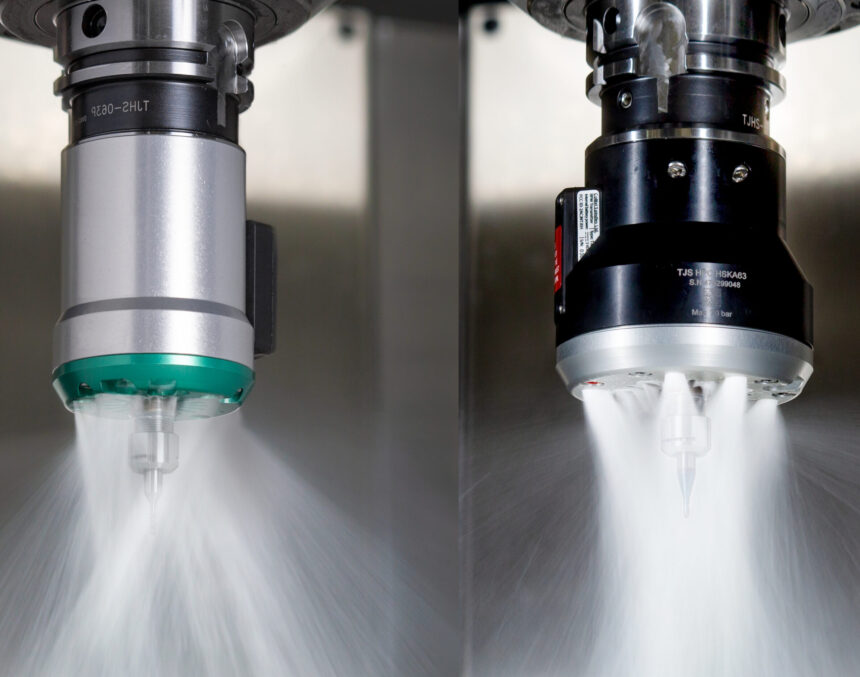The Role of Spindles in the Modern Manufacturing Landscape
As the manufacturing world rapidly evolves, the significance of high-speed operations and meticulous craftsmanship cannot be overstated. Central to these advanced production methods are spindles, which are not merely components but rather the heart of any cutting-edge machining equipment. In this realm, an especially notable innovation is the CNC spindle, which uses the power of compressed air to drive rotation at revolutions per minute (RPM), which far surpasses the capabilities of traditional electric spindles. The precise and high-speed rotational movement provided by these spindles offers manufacturers the essential performance required for crafting complex and delicate parts with unparalleled accuracy.
Comparing Air-Powered vs. Electric Spindles: Performance Metrics
The debate between air-powered and electric spindles hinges on comparing performance metrics, prioritizing efficiency, productivity, and overall output quality. In numerous areas, air-powered spindles demonstrate marked advantages. First and foremost, consider the speed factor: air-powered spindles can reach substantially higher RPMs than their electric counterparts without overheating. This feature is not just about raw speed; it also minimizes the threat of thermal damage to delicate workpieces, which is critical in industries requiring micron-level precision. Additionally, air spindles exhibit consistent torque at high speeds, essential for achieving a smooth and precise cut. These factors make them an excellent choice for operations that demand delicate finesse and formidable efficiency, such as the micro-machining processes detailed on MMSONLINE.
Key Factors Driving the Adoption of Air-Powered Spindles Globally
Air-powered spindle technology’s ascent in the global market is fueled by factors that align closely with contemporary production demands. These factors include their exceptional ability to perform consistently at high speeds and impressive thermal control, which significantly curtails the chances of workpiece damage due to excessive heat. In settings where downtime equates to lost revenue, the minimal maintenance requirements and high reliability of air-powered spindles are paramount. They shine in automated precision tasks, becoming the preference for manufacturers who strive to push the boundaries of speed and quality in their machining operations.
Industry Spotlight: Where Air-Powered Spindles Make a Mark
Several specialized industries have adopted air-powered spindle technology quickly, recognizing its unparalleled ability to achieve the precision and finish that their products demand. With its need for lightweight yet robust components, the aerospace sector employs these spindles for their precise machining capabilities. Similarly, the automotive industry, particularly in high-performance vehicles where every micron matters, relies on the superior precision that air-powered spindles provide. In the medical field, the production of intricate devices and implants requires the highest standards of accuracy—a task that air-powered spindles are ideally suited to accomplish.
Enhanced Precision and Reduced Downtime: Air-Powered Spindles at Work
Implementing air-powered spindles into machining processes has a profound effect on productivity. Not only do they enhance precision in manufacturing, but they also contribute to a notable reduction in equipment downtime. An air-powered spindle’s inherent design and operation require minimal maintenance, translating to fewer interruptions and consistent machine availability. This efficiency fosters a seamless production line flow, which, in turn, yields higher output volumes without sacrificing the quality of the products being crafted. The integration of air-powered spindles is thus a strategic decision that significantly enhances operational productivity and maintains the competitive edge of forward-thinking manufacturing enterprises.
Maintenance and Longevity: Tips for Optimizing Your Spindle’s Lifespan
Preserving the functionality and extending the lifespan of an air-powered spindle is a matter of diligent maintenance and operational awareness. Adhering to a manufacturer’s recommended maintenance schedule is essential, but there are additional measures one can take. Ensuring the air channeled into the spindle is contaminant-free and maintaining the correct air pressure can prevent premature wear and tear. Regular inspections for signs of wear or damage aid in preemptive maintenance, mitigating the risk of machine failure. These practices, although seemingly minor, play a significant role in optimizing the lifespan of the spindle, safeguarding the investment, and ensuring the ongoing efficiency of manufacturing operations.
The Environmental Angle: Are Air-Powered Spindles a Greener Option?
In today’s eco-conscious global market, the sustainability of manufacturing practices is scrutinized more than ever before. Air-powered spindles offer distinct advantages in this regard. They generally require less electrical energy, thereby reducing the carbon footprint of manufacturing facilities. The lower emissions of air-powered units facilitate responsiveness to the growing demands for greener production methods. This, coupled with improved energy efficiency, paints air-powered spindles as a notably attractive option for ecologically responsible manufacturers. Industry leaders can look into the environmental and efficiency considerations outlined by Machine Design’s discussion on the advantages of pneumatic air-powered spindles to gain a deeper insight into these features.
Looking Ahead: Emerging Trends in Spindle Technology
The future of spindle technology is dynamic and full of potential, driven by ongoing research and a relentless pursuit of improvement. Material science advancements contribute to developing lighter, more durable spindles, while innovations in air compression and flow dynamics further enhance their performance. Integrating intelligent sensors and IoT (Internet of Things) connectivity promises a new era where spindles are not just simple hardware but a cognitive component in a connected manufacturing ecosystem. Such advancements could lead to predictive maintenance capabilities, further minimizing downtime and paving the way for even more rigorous standards of precision and customization in production processes.






